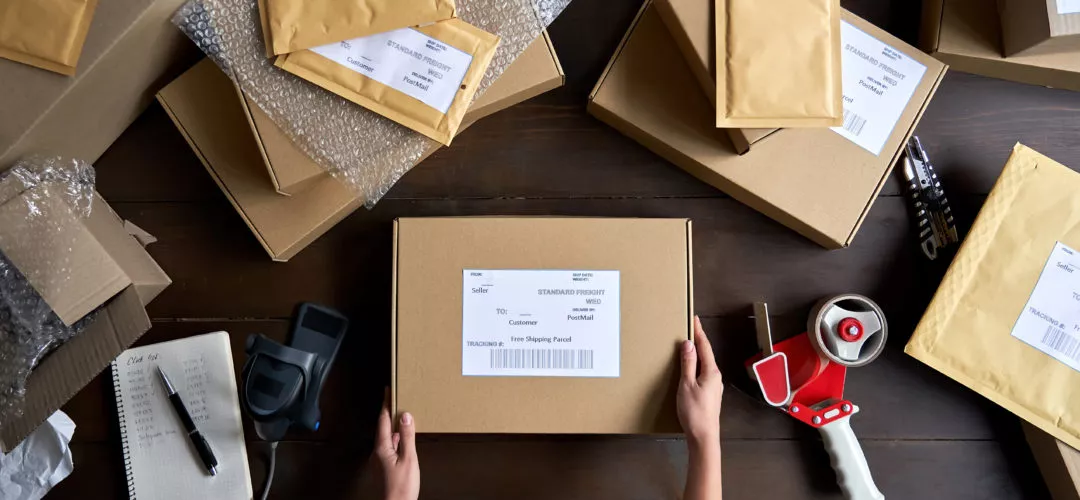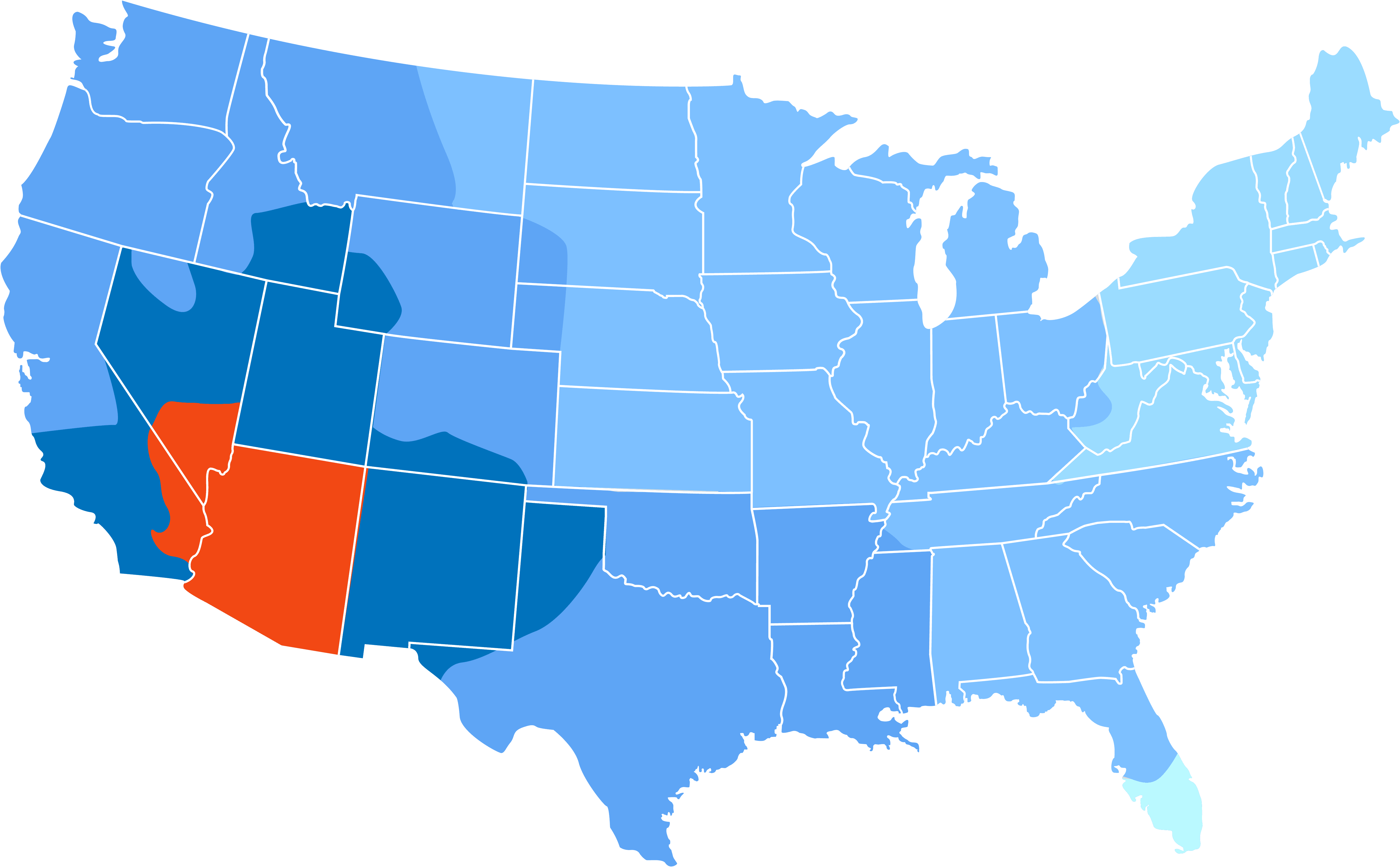Though order fulfillment is a crucial step in any eCommerce business, most people don’t understand the intricacies of the process: how it works, what happens, how products get from order to delivery. As an online shopper, the process is just background noise as you await your delivery. But for a 3PL, it’s the bread and butter of our business.
Today, we’re going to look at fulfillment from the ground up. This blog article will give you an overview of how it works, why it’s essential, and the five steps to customer satisfaction.
ORDER FULFILLMENT
Order fulfillment is, by definition, the method by which a company processes a sales order to the customer’s specifications. Efficient order fulfillment is key to your brand’s reputation, your company’s profits and your ability to retain clients.
Remember, without sales there is no business. Without order fulfillment, there are no sales.
The process involves all aspects of the supply chain: warehousing, inventory management, packaging and shipping. The key to successfully navigating all the competencies of order fulfillment is through a carefully planned and documented strategy.
FULFILLMENT STRATEGY
Each business has unique needs that will help define its fulfillment strategy. At WSI, we focus on three key areas to plan and execute efficient order fulfillment.
SIZE AND VOLUME
The size and scale of your eCommerce business play a vital role in planning fulfillment solutions. How many products do you sell? What is the volume of monthly shipments? Will this number increase due to seasonal swings or overall business growth?
Whether you’re competing with Amazon or shipping products out of your garage, it’s important to consider size and volume to determine the best fulfillment strategy. From inventory management to warehousing, a 3PL can address all of your fulfillment needs and help track your operations to cut costs and increase productivity.
TECHNOLOGY
The need for technology in a fulfillment strategy is no longer optional; it is imperative. Complete visibility throughout the fulfillment process allows businesses to track all touchpoints and know in real-time of any potential disruptions or delays.
There are so many options when it comes to fulfillment software. Cutting-edge technology streamlines processes, reduces human error, and highlights improvement areas throughout your supply chain operations. With updated technology tools, 3PLs can provide integrated solutions from multiple sources to increase transparency and efficiency. These technologies will create more accurate purchasing orders and forecasting and help drive business decisions.
Overall, eCommerce businesses need to leverage technology that connects the upstream and downstream activities— connecting purchasing and manufacturing to sales and product demand to make more accurate purchasing and production decisions.
LOCATION
With customer’s delivery expectations at an all-time high, location – both where you are shipping from and where you are shipping to – is a critical component of any fulfillment strategy. To cut costs and increase delivery speed, shippers need to focus on warehousing in central areas to the most popular delivery locations and minimize the number of shipment zones along the way.
70% of U.S. consumers choose to purchase goods from one online provider over another because they provided more delivery options.
One way to reduce shipping costs and delivery times is through ground shipping. Businesses that can ship from warehouses closest to their customers will see a significant decrease in shipping costs. As a global 3PL, WSI has locations and partners throughout the US, and the world, helping to drive down shipping costs.
5 STEPS IN ORDER FULFILLMENT
1. RECEIVING INVENTORY
ECommerce companies have the option of receiving and storing their products (either in-house or through a third-party partner) or receiving goods only once a customer places an order. Regardless of which option you choose, the inventory needs to be inspected and adequately sorted to ensure that goods aren’t damaged, and the correct amounts have been received. Technology, like bar code scanners, plays a significant role in reducing sorting time and increasing inventory accuracy.
2 . STORING INVENTORY
Though storing inventory may seem like a basic concept, it’s vital to the fulfillment process. With proper sorting and storing, the turnaround time during order processing is significantly reduced, creating shorter delivery times. The products need to be stored appropriately and inventory levels constantly managed for accurate data.
3. ORDER PROCESSING
Companies that choose to process their own orders use this step in fulfillment to pick the products from their inventory, inspect items for any damage and send it to the packing station for shipment. For companies that outsource their order processing, the logistics partner manages this entire process. It’s a costly and repetitive task that happens in all fulfillment warehouses. Any 3PL or eCommerce business needs to understand different picking methods and technologies to aid in the picking process.
4. SHIPPING
The question all shippers ask: what is the best shipping method for the least amount of money? There are many shipping options available, and with customers looking for fast delivery, shippers need to balance the cost with efficiency and speed. Giving consumers shopping options during the online sales process can also help determine the best course for shipping.
Once the products have been shipped, businesses must send customers tracking information and keep a close eye on any shipping delays before the goods are delivered. Customer satisfaction is top of mind when it comes to order fulfilment and fast shipping (one – and two-day deliveries) is a crucial step in keeping customers happy.
5. RETURNS
Returns are an unfortunate part of any eCommerce business, but we all know they do happen. Companies need to have a clear and concise return policy for damaged goods, purchases made by mistake, etc. More and more customers expect free return shipping giving businesses another shipping cost to absorb. Once the products are returned to the warehouse, they need to be evaluated for defects or damage. If they are in good working order, they will need to be sorted and put back into inventory. Like picking and sorting, this process can be tedious, but using technology, it can be done quickly and efficiently.
A lot goes into building a successful eCommerce company: You need to have a great product, a strong marketing campaign, and you should know how to get your products to customers as quickly as possible. As your company continues to grow, you’ll have a more challenging time keeping your fulfillment in-house. At some point, you’ll likely need to expand your logistical operations––either to keep up with increasing demand, because you want to expand your customer base, or both. One of the most effective ways to do this is by outsourcing your supply chain to a third-party logistics (3PL) provider. This will help save time and money while allowing you to free up internal resources for other essential operations. Let WSI help.









